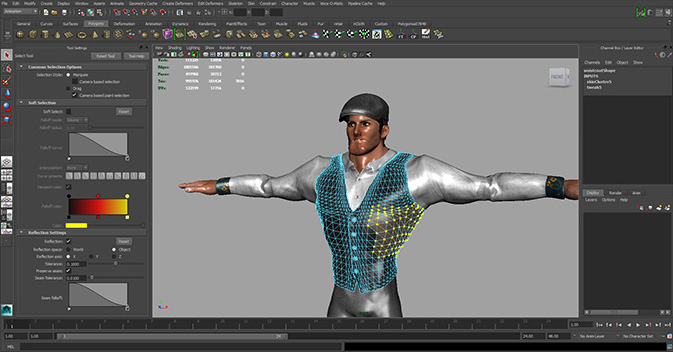
Keep in mind how close you'll need to render your object. You can adjust your target polygon count to whatever you need for your model. But first, I'll hit CTRL+Z to go back, and then I'll click on ZRemesher. So under Target Polygons Count, I'm going to change this to five and hit Enter. As you can see, I don't have enough polygons to define the object the way I want. I want Smooth Groups to be set to zero, and now I'll click ZRemesher. I want Keep Groups on, and that's for my poly groups. I want the adaptive size and curve strength set to 100. Now, the different colors are the different poly groups, and that will help ZRemesher to find those edges. For Group by Normals, I'll change the angle to 52 and hit Enter.

I'll close Geometry and go to Poly Groups. Now, I'll zoom up on this edge, and when I click the Crease button you can see it added edge loops to these edges. You may need to adjust that depending on your object. That's just putting in the edges that I want creased. For my crease tolerance, I'll set that to 40. I'll click on Line Fill so we can see the topology. Then, I'll hit my F key to frame the object. Then, I'll drag across the screen to place the object, and I'll click on Edit. I'll click on Hide to close my browser and get it out of our way. I'll go to Script, User Scripts, GoZBrushFromCinema4D, and then ZBrush will open. Now, the first thing I'll do is click on the object. Then, we'll go through the steps it takes to retopologize our CAD model in ZRemesher. But with a couple extra steps, it does a pretty good job with hard surface models also.

Normally, when we think of ZRemesher, we think of organic models. You'll notice that the mesh is denser, but the topology is much better.

The model on the left has been imported from CAD, and the one on the right is that same model taken into ZBrush and retopologized using ZRemesher. Later in the tutorial, we'll also take a look at UB Master in ZBrush, and that's a quick way to set up your UV maps. There may be times when you need to retopologize your CAD models, and ZRemesher is a quick way to do that. In this tutorial, we're going to take a look at ZRemesher and ZBrush.


 0 kommentar(er)
0 kommentar(er)
